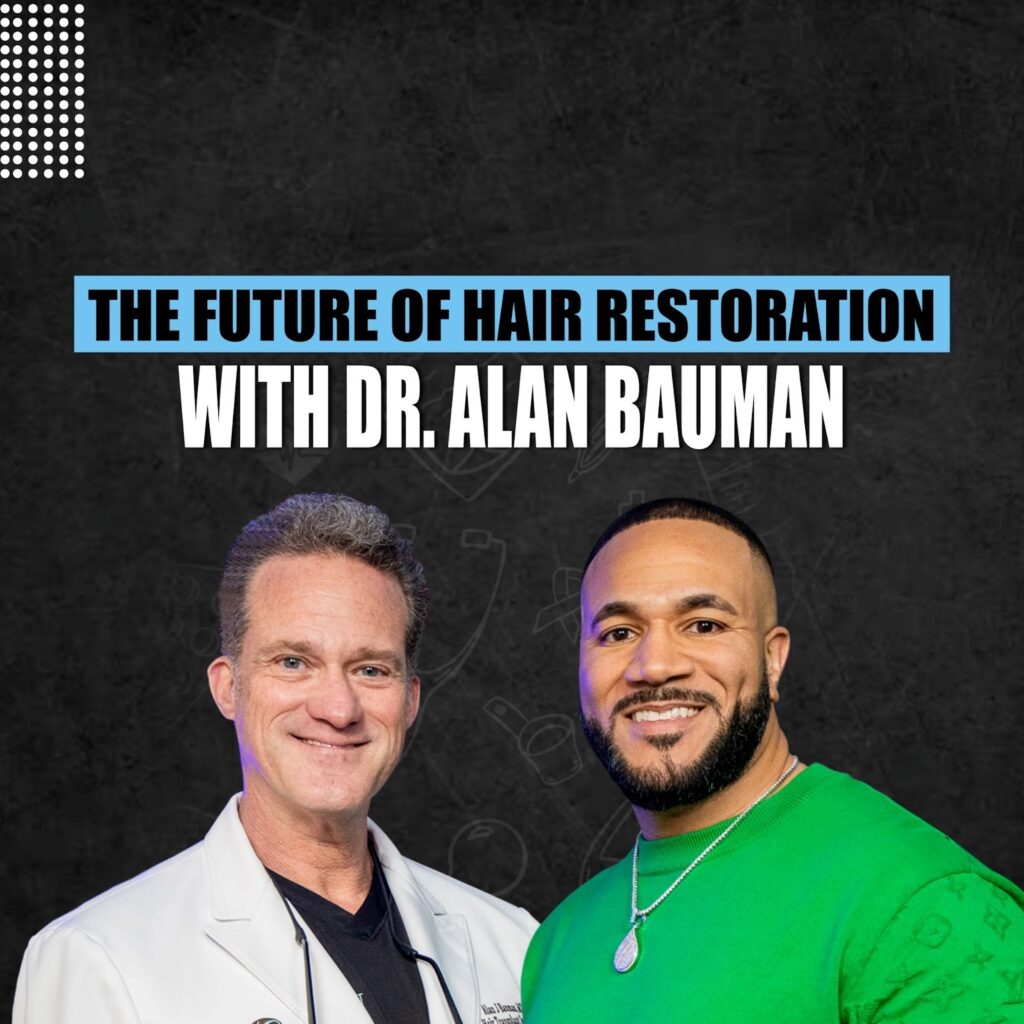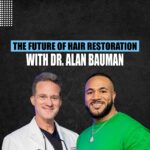Hair loss isn’t just about strands falling out—it’s about watching bits of your confidence slip right through your hands. It’s the silent battle of not feeling as vibrant or as visible; of not feeling like you. And the numbers are staggering—hair loss affects over 100 million Americans, with 80 million men and 30 million women experiencing visible thinning or balding. It’s a challenge that transcends age, gender, and background, impacting self-esteem and quality of life.
But worries end right here; there is a way to stop the loss and reclaim the power and identity tied to your hair.
In an episode of A Healthy Point of View podcast, host Sam Tejada, CEO of Liquivida® sat down with Dr. Alan J. Bauman, a world-renowned, board-certified hair transplant surgeon and the founder of Bauman Medical Hair Transplant & Hair Loss Treatment Center, to reveal how modern hair restoration doesn’t just regrow hair—it transforms lives.
The Future of Hair Restoration with Dr. Alan Bauman | Ep. 32

Whether you are struggling with thinning hair, thinking about a transplant, or just seeking some hope, this conversation is your bridge to a solution that can make all the difference.
The Emotional Weight of Hair Loss
Hair plays a pivotal role in how we perceive ourselves and how others perceive us. Dr. Bauman refers to hair as an “emotional organ,” noting that our hair can influence our mood, self-esteem, and even our professional and personal lives.
“Having a bad hair day can turn into a bad hair week, a bad hair month, or even a bad hair life,” Dr. Bauman explained.
Hair restoration has changed the lives of Dr. Bauman’s patients, not just physically but emotionally, including his father who moved from a hairpiece to confidently rocking a full, restored head of natural hair.
“For many patients, hair restoration isn’t just about looking younger—it’s about regaining confidence, advancing in their careers, and rekindling personal relationships,” Dr. Bauman said.
From “Pluggy” Transplants to Seamless Transformations
Hair restoration has completely transformed since its origin. Methods such as plug transplants during the mid-20th century left patients with scars and unnatural-looking results. The technology back then was just not advanced enough to make it feel seamless.
Advancements today have changed the field, with the ability of Follicular Unit Extraction (FUE) to precisely remove and transplant individual hair follicles without a linear scar, making it the treatment of choice.
One of the most exciting innovations is the No-Shave FUE technique, a technique in which shaving the donor area isn’t required, allowing for discreet procedures for patients.
“This technology is game-changing,” Dr. Bauman said. “Patients, especially women or men with longer hairstyles, no longer have to worry about visible signs of the procedure.”
A 360-Degree Approach to Hair Loss
While hair transplants are often viewed as the ultimate solution, they’re actually the final step in a much broader approach. The first step is to understand what is causing the hair loss in the first place. It could be due to genetics or hormonal imbalance, or even poor nutrition and lifestyle, like stress or an autoimmune disease.
“Hair loss is a symptom, not the root cause,” Dr. Bauman explained. At his practice, patients undergo comprehensive evaluations, including:
- Detailed medical histories: To identify potential genetic predispositions or medical conditions.
- Advanced diagnostics: AI-powered microscopes analyze hair density and follicle health, while blood tests and genetic screenings uncover underlying hormonal or nutritional deficiencies.
- Lifestyle assessments: Poor sleep, high stress, and nutrient deficiencies are common culprits.
Non-Surgical Interventions
For many patients, non-surgical options are an effective starting point. Dr. Bauman shared insights into treatments like:
- Platelet-Rich Plasma (PRP): Stimulating hair growth based on the patient’s own blood.
- Low-Level Laser Therapy: Red light technology that helps increase follicular health.
- Topical and Oral Medications: Including finasteride, dutasteride, and topical formulations to block DHT, the hormone responsible for male pattern baldness.
- Scalp Health Treatments: Addressing inflammation, dandruff, and other scalp conditions to create a healthy environment for hair growth.
These options slow hair loss and make transplants much more effective if patients decide to go that route.
Why Cheap Hair Transplants Abroad Could Cost You More
Medical tourism for hair transplants is becoming popular, and a few countries are at the forefront of this trend. While the cost savings may be enticing, the lack of regulation in some of these countries should not be disregarded. Many clinics don’t have qualified surgeons, aren’t following proper sterilization protocols, or using the newest technologies. The consequences can be disastrous, including infections, scarring, and unnatural hairlines.
One alarming trend involves patients boarding airplanes immediately after surgery, which can exacerbate complications. “We’ve seen cases where people bled through their bandages mid-flight,” Dr. Bauman noted, emphasizing that such risks are avoidable with proper care. He advises patients to thoroughly research clinics. There’s no substitute for a board-certified hair restoration surgeon, and patients should avoid the allure of “cheap” procedures that could lead to costly corrections.
Hair Restoration Beyond the Scalp
Hair restoration is not only for the scalp. Advanced techniques can also be used for eyebrows, eyelashes, and beards. When referring to eyebrows in particular, no-shave FUE guarantees the transplanted hair will take the same natural curl and angle. Any of these procedures can be performed on men and women who want to improve their features or restore hair that has been lost due to overplucking, scarring, or another medical condition.
Nutrition, Lifestyle, and Hair Health
Nutrition is a cornerstone of healthy hair. Not getting enough key vitamins or nutrients, such as zinc, vitamin D, and biotin, can weaken hair follicles and speed up hair loss, and since hair is composed of keratinized protein, protein intake is essential for growth.
Taking weight loss medications can also cause hair loss due to the lack of calories and nutrients going into the body. To maintain hair health during weight loss, it’s essential to keep your diet balanced, take collagen peptides, and take steps to address your deficiency with micronutrients.
A Message to Those Considering Hair Restoration
For those struggling with hair loss, Dr. Bauman offered a simple yet powerful message: “Don’t wait. Time equals follicles.” The sooner patients seek treatment, the more options they’ll have to restore and preserve their hair.
Regardless of where you are on the hair loss spectrum, Dr. Bauman’s approaches are personalized and powered by solid science. For guidance through the hair restoration journey and for more information on Dr. Bauman’s techniques and treatments, visit Bauman Medical.

